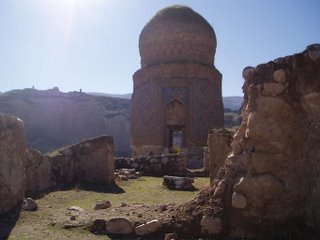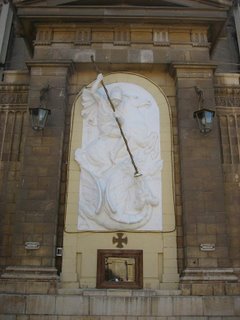The ship cleared at 10 am the day we landed in Istanbul, we were at Ataturk Airport at 11, and we were on a plane to Batman at 12. Nothing in the last two months of traveling has gone this smooth. I took this as a sign that we were meant to go.
I was also stoked that we were able to catch a flight straight to Batman, as most of the flights from Istanbul to Southeastern Anatolia head to Diyarbakir. Diyarbakir is the only place that made me nervous. This was the stronghold of the PKK during the all of the fighting in the 90’s, and there was a terrorist attack there in September that killed a dozen people. One thing I’ve learned on this trip is that these ‘dangerous’ places are usually fine when you actually go there, but that’s how it worked out.
Jeff and I wanted to go to Batman first for three reasons:
1) Why wouldn’t you go to a place called Batman?
2) Batman was the perfect place to start our exploration of Kurdish Turkey.
3) Batman has had an epidemic of female suicide in recent years. In the last six years, 165 women have committed or attempted suicide. Just this year 36 women have killed themselves. This was the basis for Orhan Pamuk’s novel "Snow" which we had read in literature class, so we wanted to actually go there.
The weather in Batman was chilly but sunny, much nicer than Istanbul. The first person that we met in Batman was a Turkish police man named Ahmed who was on our plane. He offered to help us get to the city center in Batman. "People like you, very strang

e in Batman city," he told us. Being obsessed with the ‘plain-clothes’ policemen that we had read about, we asked if he was one. It turned out that Ahmed drives a panzer tank in the hills and fights terrorists. "Kurdish terrorists?" I asked. "Yes, you are so correct!" he replied excitedly as if he had finally been understood by somebody. The airport was one room with a single desk. Ahmed told us to wait a second and went over to the desk, where he was issued a huge handgun and a bag of bullets. He stuffed the gun in his belt and said, "OK, we go now." Jeff smiled at me; we were definitely rollin’ with the right guy.
We hopped in a dolmus, which is the mini-bus transportation that is everywhere in this part of Turkey. After a few blocks we passed a tank which was the same kind that Ahmed drives. There is a healthy amount of B.O. in Turkey and we got used to it pretty quick in those small vans. There was some kind of miscommunication, and Ahmed hopped out and said goodbye. We got out in what we were told was the city center.
Walking through Batman, we got a lot of blank stares, but didn’t feel too uncomfortable. Absolutely nobody spoke English, and we could tell that they don’t see a lot of people like us in this area. We didn’t see very many women, and the ones we saw were bundled up tight. After a while, one brave kid came up to us and within a minute we had every kid in Batman walking around with us.
The kids screamed and laughed and made me feel a bit uncomfortable. I didn’t want to have a whole lot of attention. They understood that we were from America. They clapped and jumped and yelled and then started chanting "Ameerica, Boosh" while waving th

eir middle fingers and making farting noises with their mouths. So Mr. President, I don’t know if you are reading my blog, but if you are, the youth of Batman doesn’t like you a whole lot.
One thing that we did learn is that oil had been discovered in Batman in the 50’s. Before that, Batman was a small town similar to the other places we would see. The oil had caused the new urban sprawl. Money had come in, and with it came stores pushing secular western culture. This is where the women in Batman are caught in the middle. Their older generation is rooted firmly in traditional religious values, but they want to embrace the new culture that they see on television and in town. They are subjected to a lot of shame by their families. There are suggestions that a large number of the suicides are forced or are actually murders.
You wouldn’t guess that these things are happening just by walking through, but Batman is a pretty depressing place for some reason. We didn’t feel too compelled to stay the night, so we hopped on a bus to Hasankeyf as the sun was setting.

The bus ride to Hasankeyf snaked down into the Tigris river valley. We talked to a few young guys on the bus that had a newspaper with them. One pointed to a picture of Saddam and made a fake noose around his neck and stuck his tongue out. "Very very bad" he said as he pointed to the picture. He also pointed to a picture of Bush on the next page and repeated "Very very bad." It occurred to me that he probably had family or friends in the Kurdish region of Iraq who were terrorized or killed during Saddam’s regime. To me, Saddam just seemed like a mythical bad guy in a far away place. But here, less then 100 miles from the Iraqi border, to these people he was very real.

 et the job done. If you are on the balls of your feet, then everything gets tense. Like Fat Joe says, you gotta “Lean Back”. As long as you are on your heels, it’s all good.
et the job done. If you are on the balls of your feet, then everything gets tense. Like Fat Joe says, you gotta “Lean Back”. As long as you are on your heels, it’s all good.





















































